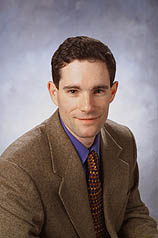December 16, 2015 @ 3:00 pm - 4:00 pm
Event Navigation
Ultrafast Compression Experiments to Rapidly Test Extreme Condition Materials Predictions
Dr. Joseph M. Zaug, Physical Chemist and Leader of the Experimental Reaction Dynamics Group at Lawrence Livermore National Laboratory
In this talk, we will discuss recent results from ultrafast tabletop laser compression experiments on fluids, polymers, and high energy density organic molecules including single crystals. Previous work on ultrafast shocked metals will be summarized and serve as an introduction to our technical approach. Extreme material theories benefit from this research through a growing understanding of how ultrahigh strain rate (108 -1011 s-1) loading processes affect later-time high-strain rate (104 -106 s-1) phenomena occurring on macroscale dimensions. Larger scale gun-based compression platforms nominally generate 106 s-1 equilibrated strain rate loads; however, initial rising transient strain rates —not measured— may reach ultrahigh values. Unfortunately, elucidation of transient shock induced physical and chemical dynamics require ultrafast time and micron scale spatially resolved in situ measurements.
Here it would be most useful to directly measure material transitions using time resolved ultrafast vibrational spectroscopy, x-ray diffraction or imaging methods. At present, the ultrafast shock community currently utilizes important but less direct diagnostics that measure hydrodynamic flow and UV/VIS absorption. (We can consider perspectives on the viability of potential solutions to this long-standing challenge.) Nonetheless, when we’ve matched —on identical temporal and spatial scales— hydrodynamic data with commensurate molecular dynamics or crystal mechanics simulation results, more comprehensive pictures materialize thus further illuminating the progression of early-time shock induced phenomena, such as high-strain rate induced elastic to plastic wave transitions preceding chemical initiation. Definitive knowledge gaps are also discovered.
The advanced materials science discipline is focused on the study and development of technologically important composite and network structured systems. Advanced manufacturing processes can now produce composite systems with designed microstructural features and particulate distributions that can be spatially scaled from micron or sub-micron dimensions up to at least millimeters. And with this new opportunity in hand, we propose to compare ultrafast shock results with conventional shock platform results to better inform in silico predictions of macroscale extreme materials response.

Dr. Joseph (Joe) Zaug – Founding member (1997) and leader of the reaction dynamics experimental group within the Materials Sciences Division at Lawrence Livermore National Laboratory. (Ph.D.
in Physical Chemistry, University of Washington, Seattle, 1994; B.S. in Chemistry, Illinois Institute of Technology, 1988) He has twenty-five years of experience developing tools that quasi-statically and/or dynamically compress materials and engineering new approaches to characterize extreme condition material response using primarily laser-based systems. Numerous grand-challenge science issues have been met by these innovations resulting in high-profile publications in disciplines such as geophysics, high pressure physics and chemistry including chemical synthesis, and materials science. Joe and his group actively collaborate with international and U.S. collaborators. His current research focus is on measuring equations of state and physical or chemical phase transitions of single crystals, polymers, and composite materials subjected to quasi-static and ultrahigh strain rate loads.
Seminar will be held in Malone Hall, Room G33/35 and will begin at 3 PM.




